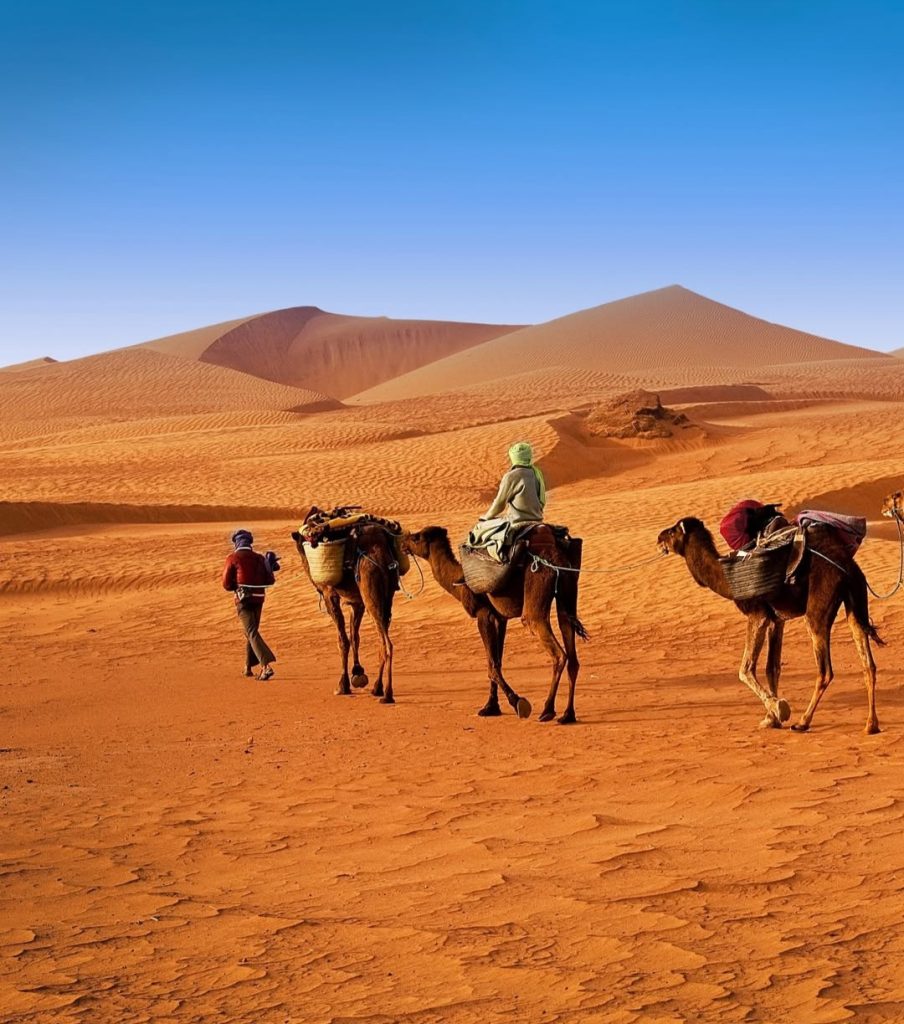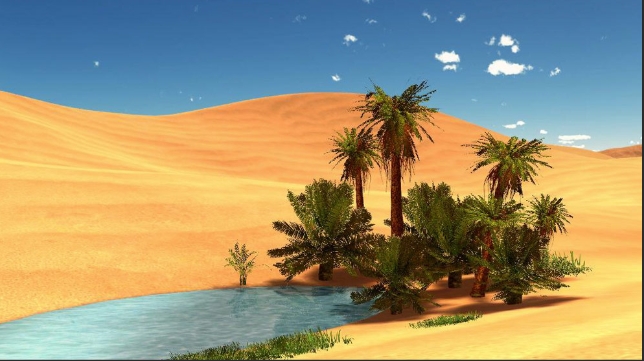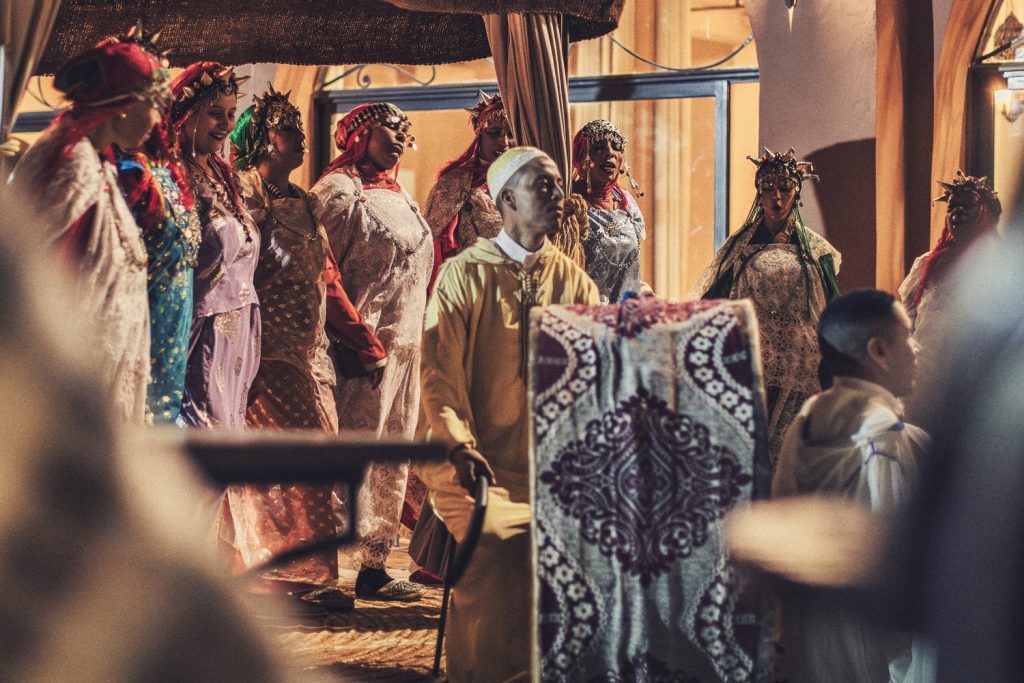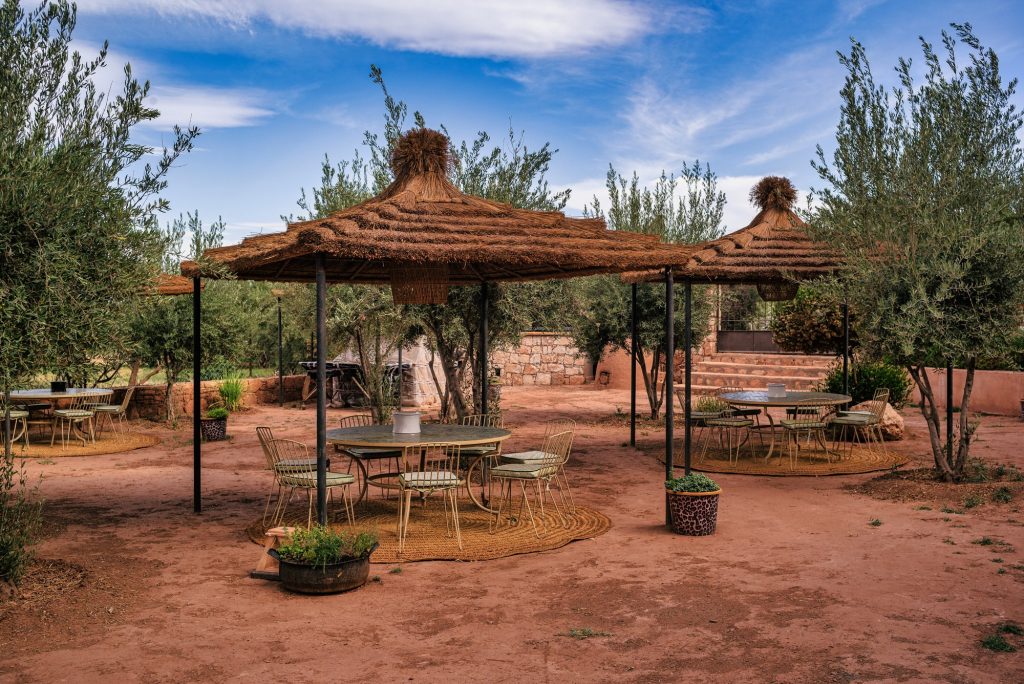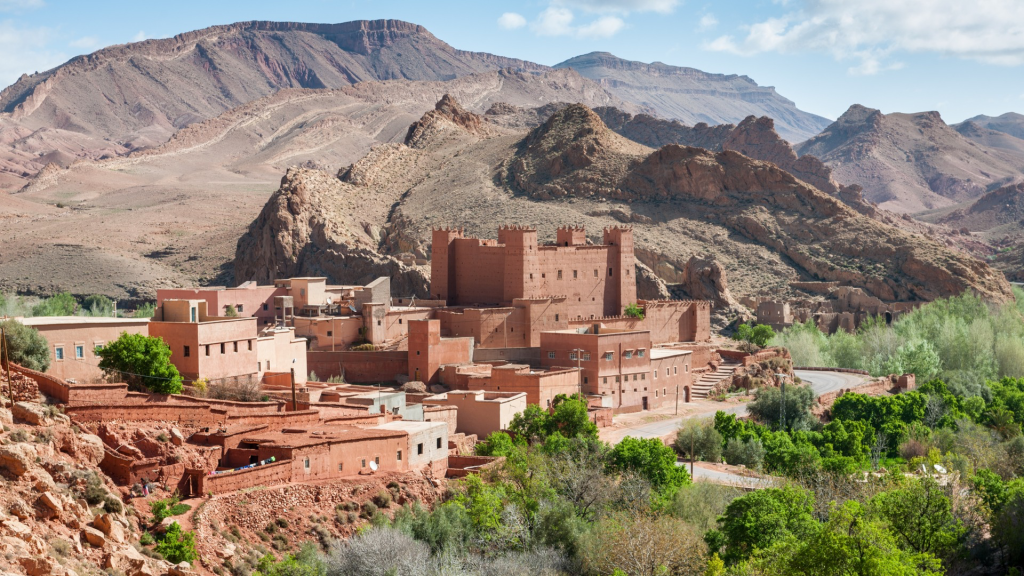Located 50 kilometres south-west of M'Hamid El Guizlane, the Sacred Oasis of Oum Lâalag appears like a mirage,
From M'Hamid, it takes 1? hours on a 4×4 track or 3 days on camelback to discover it.
It is 12km from the Chegaga dunes, the main one of which rises to 350 metres.
There, on the old road to Timbuktu, a few kilometres from the Algerian border.
The sacred Oum Lâalag oasis covers 15 hectares and is sacred because it has the most precious resource in the desert: water, which arrives here via a spring.
The Oasis takes its name from an old popular belief: it is said that the spring was inhabited by a protective soul. For a very long time, passing nomads, confident of this protection, would leave their luggage there without apprehension.
The protection covered around 15 hectares all around the oasis, and if someone took something from this protection, the object taken was transformed into snakes or scorpions a few kilometres after leaving the Sacred Oasis. For a long time, this sublime oasis was a crossroads for nomadic caravans.
This stopover at the Sacred Oasis bivouac, a place frequented by travellers and a few nomads still active in the region, is an incentive to respect these rules.
The Sacred Oasis has a bivouac which, in conjunction with a desire to develop ecological tourism, applies strict rules that respect the environment. It is part of an enhancement and protection project being carried out by the association "Les Amis de l'Oasis Sacrée" (Friends of the Sacred Oasis). Isolated oases are in danger due to the recession of nomadic activity, which is practically no longer involved in their use and upkeep, not to mention the critical climatic conditions.
The Sacred Oasis of Oum Lâalag is one of the 123,000 hectares of the Iriqui National Park, created in 1994.
The Oasis covers around 15 hectares and is made up of different areas reserved for agriculture and a nature reserve for flora and fauna.
Iriqui National Park:
It was established in 1994 and covers an area of 123,000 hectares of local fauna (gazelles, docas, bustards, skunks and many reptiles, such as the gecko, small monitor lizards, the chameleon, the ceraste...). The park aims to reintroduce extinct species: the oryx and addax and the red-necked ostrich (which was exterminated a long time ago in Morocco as part of the feather trade). This ambition is being pursued in conjunction with the development of ecological tourism, for example by combating the spread of bivouacs and the use of 4×4 vehicles in the dunes. The park is located 120km east of M'hamid.
The initiative also aims to reintegrate the many species that disappeared but were still very numerous some thirty years ago, such as gazelles (gazelle Dorca), ostriches, bighorn sheep, theoryxthe hyena or the houbar bustard.
In order to promote ecotourism in the south of Morocco, particularly in the Saharan and pre-Saharan regions, everyone needs to be made aware of the issue if the current objectives are to be achieved.
